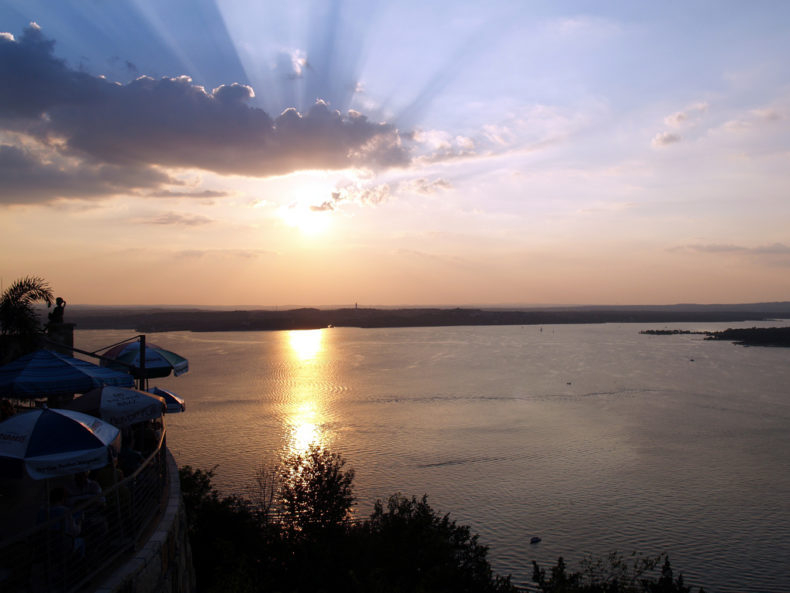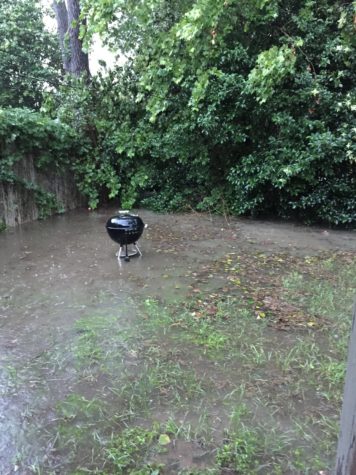
As I put today’s fifth pot of water on the stove to boil, I think about how this has become part of my daily routine. Bring 5 quarts of water to a boil, set the timer for 3 minutes, pour some in the French press to brew coffee, use some to wash out the dog dishes, let the rest cool, fill the huge pitcher in the fridge, top off the dogs’ water bowls, fill the reusable water bottles. Boil another pot of water, and make sure it’s at a rolling boil for at least 3 minutes. Do it again and again. Ensure I have a pot of freshly boiled water ready for dinner: I need to wash the vegetables and we need clean water to drink.
I’m not on a camping trip, nor am I on a reporting trip in a country with tainted water. I’m in Austin, Texas, a city of nearly 1 million people. As I write this, we are on day 5 of a boil-water order. Use only boiled or bottled water for drinking, cooking, feeding pets, brushing teeth, cleaning dishes.
It started around 3am on Monday morning, October 22. That’s when the city issued the alert. People panicked. By 8am, all area grocery stores were sold out of bottled water. Restaurants closed for the day. Many cafes weren’t offering coffee or tea. Their equipment couldn’t adequately boil water for 3 minutes – the amount of time the city’s water department recommends to kill any parasites or bacteria. Even Starbucks was serving only bottled beverages; a friend shared a meme with the caption “and this is how the apocalypse begins.”
Our water supply is tainted, full of silt and debris from runoff of the historic flooding just west of us, in Hill Country. Austin pulls its water from the lower Colorado River, which runs through our city’s downtown. Along this river and to our Northwest is a system of six dams and their human-created reservoir lakes – known as the Highland Lakes Watershed. It’s been around for decades, working to collect water during flash floods and conserve water during drought. But in early October, regions along the Highland Lakes and the rivers that feed into those lakes received historic rainfall. That pushed uphill water levels to historic flood levels. The water needs to go somewhere, so it follows gravity and heads down the Colorado River to the next reservoir lake, held by its dam. Where authorities opened floodgates, the water then flowed farther downhill to the next lake, and so on. Lake Travis, just west of Austin, reached the fifth highest water level in history. And all that water also brought with it an enormous influx of debris, silt levels 100 times higher than normal, which the Austin Water system couldn’t safely filter out.

The boil-water notice on Monday the 22nd was precautionary, but on Tuesday, Austin Water failed to meet the minimum treatment requirements. Boiling water for human (and pet) consumption became mandatory. Here I was, in a city of nearly 1 million people, the capital of one of the largest states in America, and I was boiling water to drink. Perhaps surreal at first, we acclimated quickly. I am aware of the privilege throughout this city during the water-boil notice. While plenty of Austinites whined on social media, referring to this episode as the #Austinwatercrisis, there was also a constant voice in the back of my head, reminding myself what people in other parts of this country have dealt with for years (cough Flint cough).
At my house in Austin, it became routine in just a day or two to use boiled water to clean vegetables and fruit, to make coffee, to rinse dishes, to give our dogs. Local cafes adjusted quickly, too. Some of the city’s breweries, which boil their water prior to beer making, were sending kegs of clean water to local coffee shops.
This week’s relationship with water has only reiterated how incredibly powerful of a resource it is. The force of water carves rock and stone, pulls tree roots from the ground, lifts houses off their foundations, tears apart bridges, and shatters lives. And yet that same resource is absolutely vital for life and health. It isn’t only necessary for drinking, but also for every nourishing morsel of food that we put into our bodies, for hygiene, for our beloved pets.
It’s amazing how often we forget the power of water, and how a slight inconvenience reminds us of it. Why does it take some outside action, like a flash flood (or hurricane) to appreciate and conserve this resource? After such natural events, the aftermath can be an inconvenience at best, or something far more tragic. Do we learn from these events? The recent Hill Country flooding hasn’t yet convinced me to move farther from a region prone to flash floods, but it has given me a bit more perspective on appreciating clean, fresh water. I won’t let the tap run as long for water to come to temperature, I’ll take shorter showers, and I’ll enjoy my boiled, clean drinking water.
The city lifted the order on Sunday afternoon, 12 hours shy of the one-week mark. We still have a pot of freshly boiled water on the stove, and full refillable water bottles in the refrigerator. I’m using it to clean my vegetables, fill my water pitcher, and to feed the dogs. The last thing I would do with that clean water is waste it.
—
 From Liz:
From Liz:
I am a freelance science writer specializing in telling the stories of our incredible universe, although I occasionally write a bit about other physical sciences. I studied physics and astrophysics, but quickly found myself leaving behind mathematical equations to instead obsess over the words and ideas to bring the cosmos to more people. I’m happiest writing about the intersection of different disciplines, and how that interaction reveals something previously unknown. My website is here.
—
Top image credit: Flickr user Vine Ripe Design, CC BY 2.0
Folks are hearing the canary, but are telling themselves it’s a meadowlark.
Great Job Liz